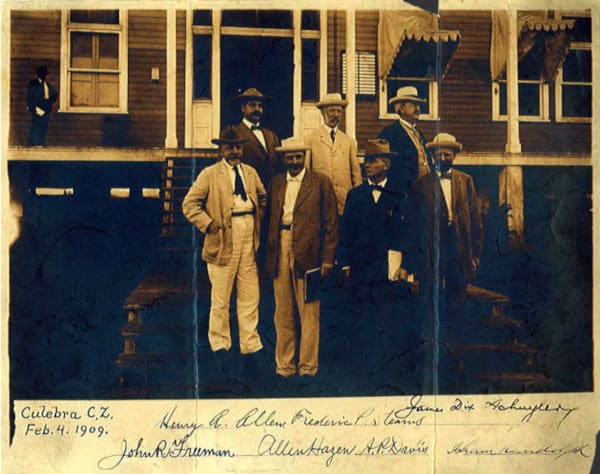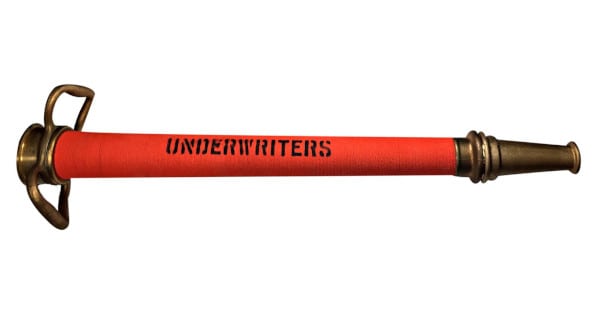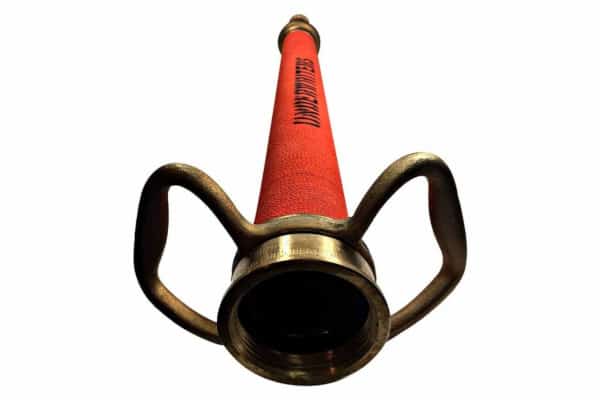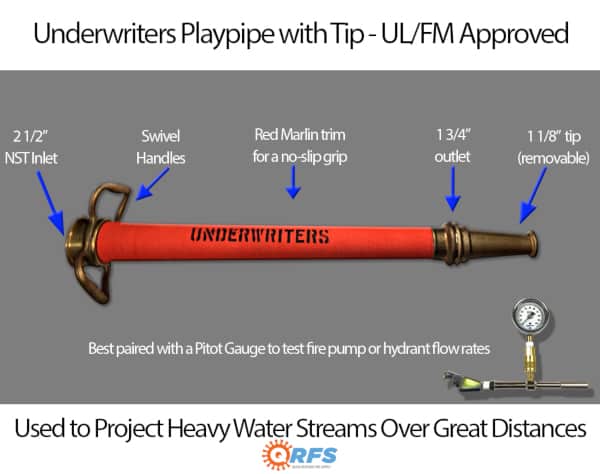Underwriter’s playpipes straighten streams from fire hydrants and fire pumps, making it easy for fire professionals to test water flow rates
Underwriter’s playpipes measure flow rates at fire hydrants and fire pumps with extreme accuracy. In this article, we’ll look at the history of the underwriter’s playpipe and its modern-day uses in the fire protection industry.
If you’d prefer simply to purchase an underwriter’s playpipe, click here.
The need for “good” streams from fire hose nozzles led to the creation of the underwriter’s playpipe
In 1881, John Freeman developed the underwriter’s playpipe following a series of 19th-century studies on hydraulics and the flow of water through a fire hose—studies that remain useful even in the 21st century.
Freeman, a hydraulic engineer remembered largely for his work on the Panama Canal, compared the streams of more than 40 different fire hose nozzles. He wanted to determine why some nozzles produced more solid, accurate, and wind-resistant streams than others.

His experiments led to the development of criteria still used to evaluate a “good” stream. Effective streams discharge most of their water within a small, circular area. They achieve a reasonable height, distance, and force even in the presence of a breeze. And, they don’t break apart into a mist or multiple, smaller streams.
Freeman used these criteria to invent a nozzle that could reliably produce effective streams: the underwriter’s playpipe.
What is an underwriter’s playpipe and how is it used?
The underwriter’s playpipe is a straight-stream nozzle that discharges water streams over long distances.
Playpipes feature a remarkably smooth, long pipe—often 30 inches or so—that straightens a stream of water while reducing turbulence. Firefighters originally used playpipes as outdoor hose nozzles. Today’s firefighters, however, opt for smaller, more specialized nozzles made for indoor and outdoor use. Still, underwriter’s playpipes produce straight, smooth streams. These streams make it easy for inspectors to measure flows at a fire hydrant or fire pump.
Typically, inspectors take measurements at the discharge end of the playpipe using a pitot gauge kit. These kits feature a handheld tube and gauge that measure the pressure discharged at the tip. This pressure, in turn, is converted mathematically to the hydrant’s flow in gallons per minute.
During tests of fire pumps, the playpipe secures directly to a hose valve. But when conducting flow tests with fire hose—particularly, in fire hydrant flow tests—those measuring flows may need to hold a playpipe in place manually. The playpipe’s large, sturdy inlet handles make this task significantly easier, while cord or other non-slip material wrapped around the pipe makes directing the stream much easier.
Why test flows at fire hydrants and fire pumps?
In the case of a fire or emergency, adequate water supply and pressure are essential. Testing the flow of fire pumps and hydrants ensures that water is available and that flow rates are sufficient in times of need. These tests also ensure that there are no closed valves and that debris is flushed from the water mains.
City officials and professional contractors perform hydrant pressure tests following guidelines made by the National Fire Protection Association (NFPA). There are various options for performing the tests, but underwriter’s playpipes and pitot gauges provide one quick and reliable method to test the flow.
Purchase or replace your underwriter’s playpipes at QRFS
QRFS offers UL-listed and FM-approved underwriter’s playpipes made with 30 inches of durable, cast-brass pipe. These playpipes feature a standard 2 1/2-inch NST-threaded inlet and a 1 1/8-inch removable tip that secures to a 1 3/4-inch outlet.
Each underwriter’s playpipe features large brass swivel handles for maximum control. Red marlin fiber wraps around the pipe, providing a non-slip grip during hydrant flow tests.

Click here to look at our UL & FM-approved underwriter’s playpipe.
Need to know more about underwriter’s playpipes? Having trouble finding the one you need? Call us at +1 (888) 361-6662 or email support@qrfs.com.
This blog was originally posted by Jason Hugo and Anna Hartenbach at blog.qrfs.com on May 5, 2017, and updated on January 27, 2019. If this article helped you find what you need, check us out at Facebook.com/QuickResponseFireSupply or on Twitter @QuickResponseFS.



